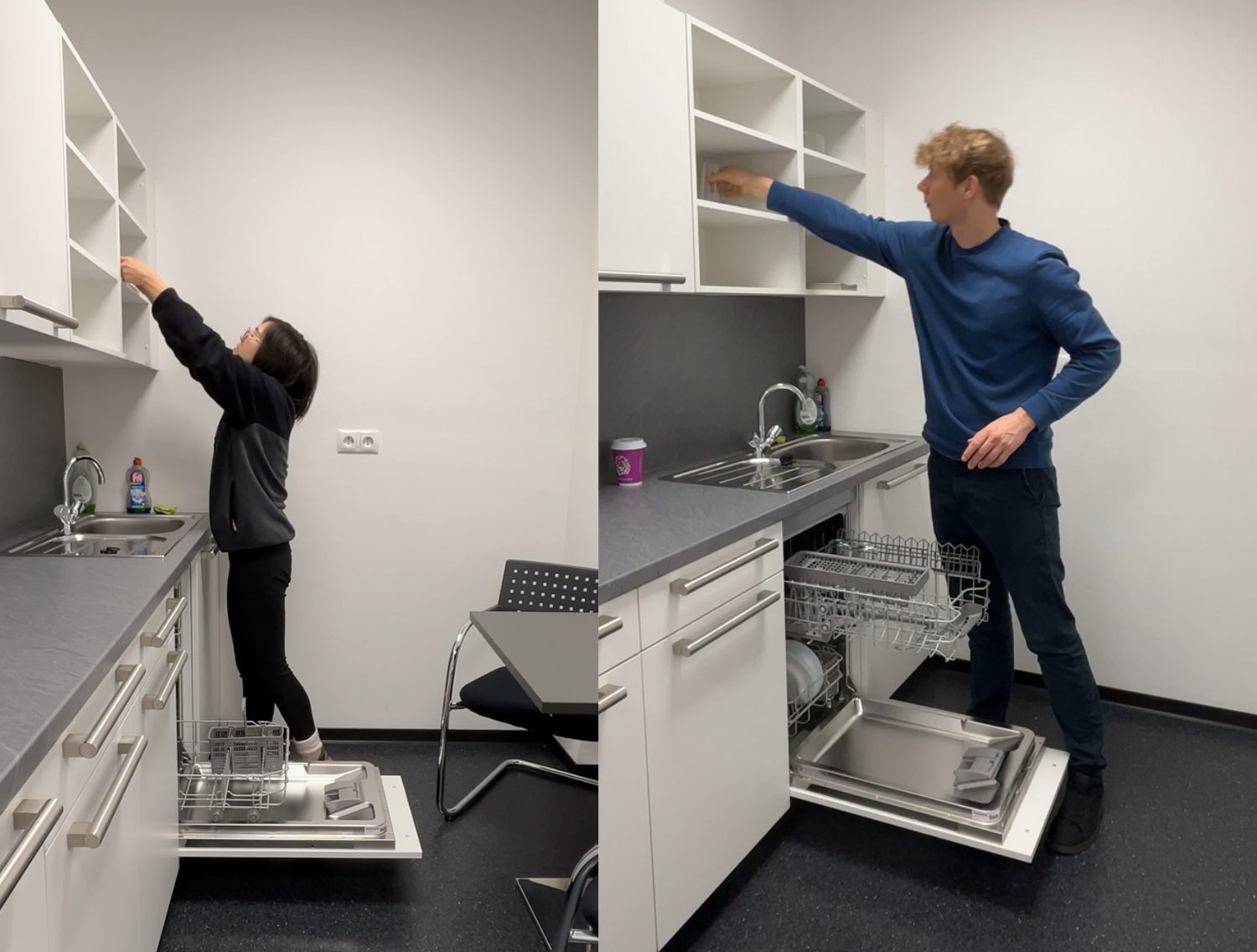FlexLib Studio Demo
This demo works best on desktop with Chrome or Edge.
This page showcases some of the visualizations from FlexLib Studio. We are going to compare two different people unloading a dishwasher for 1 minute. Lan is 150cm (4’11”) tall and Tom is 190cm (6’3”) tall.
We will explore the differences in their posture throughout this process.

The first thing we can do is compare their posture using the 3D visualization of the FlexTail sensor data. This page is interactive. Slide the slider in the images and use the mouse or your finger to rotate the 3D model. You can double tap the model to reset the view to the default position.
Lan
Tom
The first difference we see is that Lan has apparently started with the bottom drawer. We can see that she bends much more in the first half of the measurement and significantly less in the second half. For Tom, it’s the other way around. Apart from this, it’s hard to see meaningful differences in their respective postures.
Key Metrics
A lot of spine movement can be summarized in a few key metrics. These are the sagittal angle, lateral angle, twist angle, and lumbar bending.
| Metric | Explanation | Positive Direction |
|---|---|---|
| Lumbar | Bending of the lumbar spine | Forward |
| Sagittal | Forward/backward bending | Forward |
| Lateral | Side-to-side bending | Right |
| Twist | Rotational movement | Right |
It now becomes more obvious that Lan starts with the bottom drawer and Tom with the top drawer. We can see that Lan bends her lumbar spine significantly but also remains in the bend position for longer periods of time.
Lan
Tom
You can toggle what series are selected by clicking on “Select Series” and what degree of smoothing is applied to the data with the Resolution dropdown.
Finding the Peaks
A density plot is a smooth version of a histogram. It’s used to show where the values in a dataset are concentrated. The higher the peak, the more time the person has spent in that position. Multiple density plots stacked on top of each other are called a Ridge Line Plot.
In this case, the “Lumbar” curve represents the bending of the lumbar spine. Values to the left mean bending backwards, values to the right mean bending forwards. In our case, we can see that Lan spends more time in extreme positions than Tom.
Lan
Tom
We can see a clear spike around -16° and +40° for Lan’s “Lumbar” curve, which indicates that she is bending backwards, probably to reach into the cupboard. Since she has less arm reach than Tom, she also has to lean more forward to reach into the dishwasher.
Tom, on the other hand, has to bend significantly less backwards and forwards. But he twists (rotates) his torso through a wider range and leans more to the left and right (lateral), which we can see based on the further spread of the “Twist” and “Lateral” curves.
You can slide the slider with the two handles to restrict the time period that’s seen in the plot.
To validate that our assumption is correct, we can look at the combination of the lumbar bending and the sagittal angle. The sagittal angle is basically leaning backwards (negative) and forwards (positive).
Filtering Data
So we want to see how the Ridge Line Plot looks if we only include the periods where the sagittal angle is less than 10°, i.e., when the posture is more or less upright.
Lan
Now we can see that actually Lan is most bent back when she’s the most upright. See if you can discover more patterns by changing the settings in the widget above. As you can see, the timeline has blue and gray areas now. The blue areas show at what time the filter condition is satisfied.
Reality Check
If we compare a picture of the two, we can see that Lan does indeed need to stretch further to reach into the cupboard. We can also see why Tom shows more twist (rotation) throughout the measurement. He rotates his upper body while leaving his feet in place, while Lan rotates her body using her feet.

Going Beyond
This interactive demo showcases the power of our visualization tools for analyzing human movement data. The patterns we’ve discovered here are just the beginning of what’s possible with proper data analysis.
Want to dive deeper into the data analysis? Explore our Jupyter notebook that demonstrates how to work with this sensor data programmatically using Python, pandas, and visualization libraries.